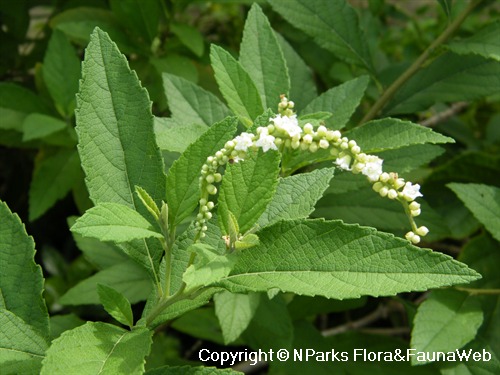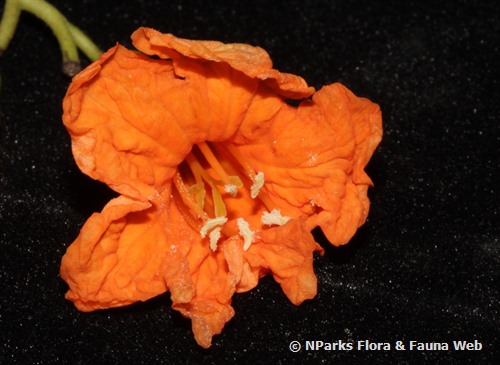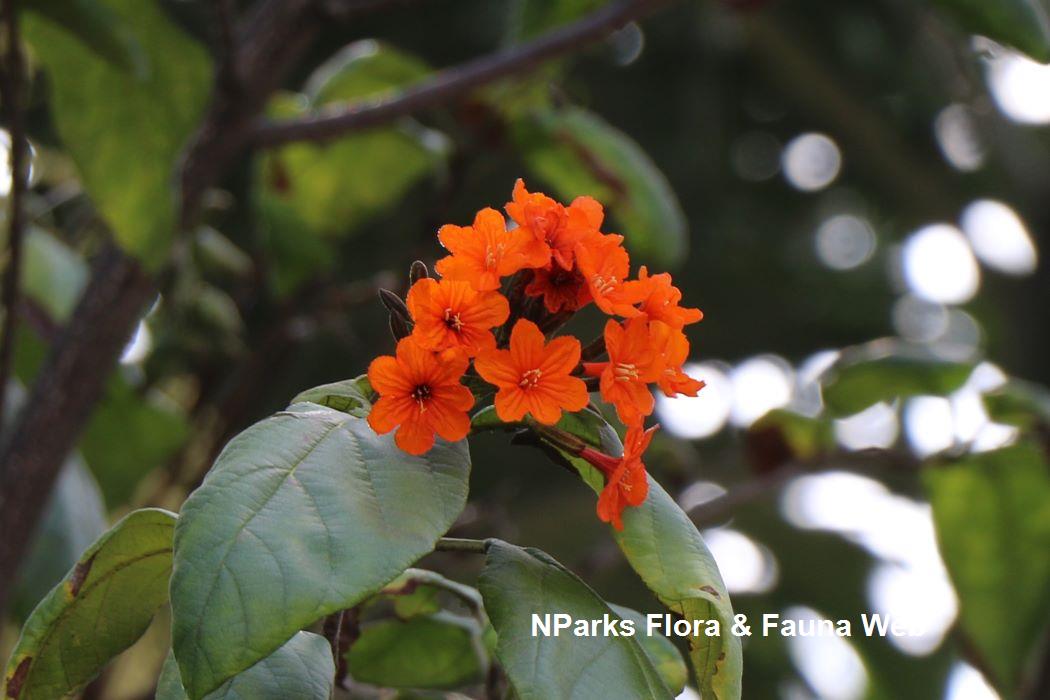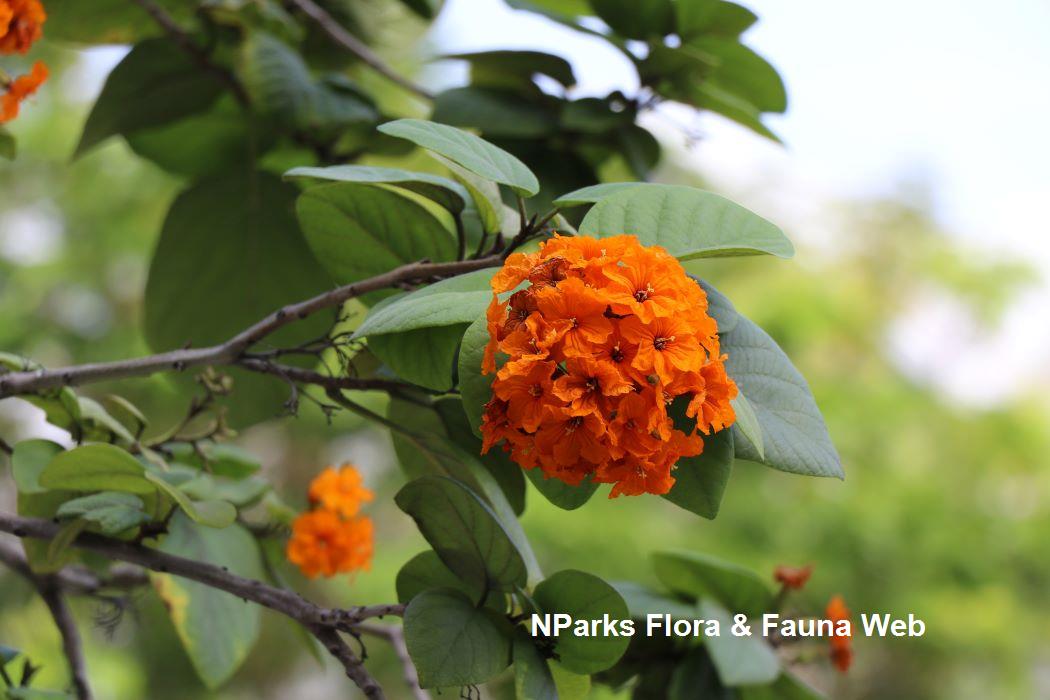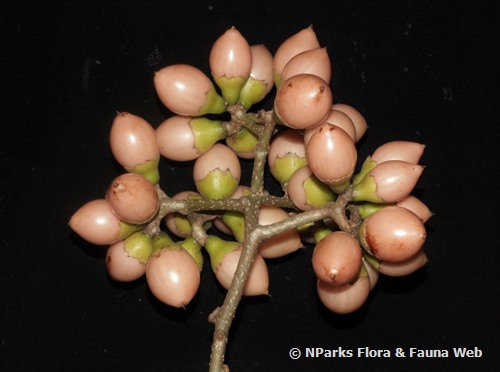
Back
Cordia cylindrostachya
| Family Name: | Boraginaceae |
| Synonyms: | Varronia cylindrostachya |
| Common Name: | String Bush, Scorpion Weed, Black Sage |
Name
Classifications and Characteristics
| Plant Division | Angiosperms (Flowering Seed Plants) (Dicotyledon) |
|---|---|
| Plant Growth Form | Herbaceous Plant |
| Lifespan (in Singapore) | Perennial |
| Mode of Nutrition | Autotrophic |
Biogeography
| Native Habitat | Terrestrial |
|---|---|
| Preferred Climate Zone | Tropical |
Description and Ethnobotany
| Growth Form | Bushy shrub, able to grow up to about 1 - 1.5 m tall. |
|---|---|
| Foliage | Green oblong-lanceolate to lanceolate leaves, margins serrate, surface tomentose, measuring about 3 cm long and 2 cm wide. |
| Flowers | Flowers small and about 4 mm long, white and bell-shaped, borne on a terminal spike inflorescence about 3 - 5 cm long, lobes ovate and acute, calyx densely pilose. |
| Fruit | Fruit is an ovoid drupe, turns from yellow to red when ripen. |
| Cultivation | Often cultivated as hedge plant from 1940s - 1960s. Declining since then due to introduction of Schematiza cordiae beetle from Trinidad to Malaysia as biological control against plant spread. Leaves eaten by larvae & adult of beetle. Fruits are attacked by female Eurytoma attiva wasp, which lays eggs that hatch into seed-eating larvae, resulting in loss of fruits. |
| Etymology | Genus Cordia is named after Valerius Cordus (1514 - 1544), a German botanist and pharmacist, and considered as one of the fathers of pharmacognostics. Species cylindrostachya means with cylindric spikes. |
| Ethnobotanical Uses | Medicinal: Reported to have antibacterial and anti-inflammatory properties. |
Landscaping Features
| Landscape Uses | Hedge / Screening, Parks & Gardens, Small Gardens |
|---|
Fauna, Pollination and Dispersal
| Fauna Pollination Dispersal Associated Fauna | Butterfly-Attracting |
|---|
Plant Care and Propagation
| Light Preference | Full Sun |
|---|---|
| Water Preference | Moderate Water |
| Plant Growth Rate | Fast |
| Rootzone Tolerance | Poor Infertile Soils |
| Maintenance Requirements | Moderate |
| Pruning | Can be pruned into a hedge. |
| Diseases | Leaves eaten by larvae & adult of Schematiza cordiae beetle, causing defoliation. Female Eurytoma attiva wasp lays eggs in fruits. Larvae are seed-eating, resulting in loss of fruits. |
| Propagation Method | Seed, Stem Cutting |
Foliar
| Foliage Retention | Evergreen |
|---|---|
| Mature Foliage Colour(s) | Green |
| Mature Foliage Texture(s) | Rough |
| Foliar Type | Simple / Unifoliate |
| Foliar Arrangement Along Stem | Alternate |
| Foliar Shape(s) | Non-Palm Foliage (Elliptical) |
| Foliar Venation | Pinnate / Net |
| Foliar Margin | Serrate / Toothed |
| Foliar Apex - Tip | Acute |
| Foliar Base | Cuneate |
Non - Foliar and Storage
| Stem Type & Modification | Herbaceous |
|---|
Floral (Angiosperm)
| Flower & Plant Sexuality | Bisexual Flowers |
| Flower Colour(s) | White |
|---|---|
| Flower Grouping | Cluster / Inflorescence |
| Flower Location | Terminal |
| Inflorescence Type | Spike |
Fruit, Seed and Spore
| Mature Fruit Colour(s) | Red |
|---|---|
| Fruit Classification | Simple Fruit |
| Fruit Type | Fleshy Fruit , Drupe |
Image Repository
Others
| Master ID | 543 |
|---|---|
| Species ID | 1839 |
| Flora Disclaimer | The information in this website has been compiled from reliable sources, such as reference works on medicinal plants. It is not a substitute for medical advice or treatment and NParks does not purport to provide any medical advice. Readers should always consult his/her physician before using or consuming a plant for medicinal purposes. |

